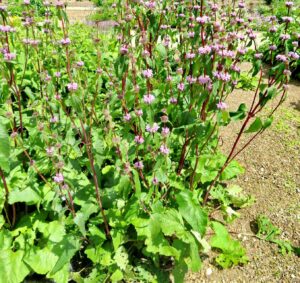How to Propagate Phlomoides tuberosa

Unlocking the Beauty of Jerusalem Sage: A Guide to Propagating Phlomoides Tuberosa
Jerusalem sage (Phlomoides tuberosa), despite its name, isn’t a true sage, but rather a captivating perennial boasting vibrant pink to purple flower spikes that grace gardens from early summer to fall. Its unique beauty and ability to thrive in various conditions make it a favorite among seasoned gardeners and beginners alike. Intrigued? Let’s delve into the world of propagating this resilient beauty.
Two Paths to Success: Seeds and Divisions
Propagating Phlomoides tuberosa offers two main avenues:
1. Sowing the Seeds:
- Timing is Key: Spring, after the last frost, is the ideal time for direct sowing. For an early start, begin indoors about 6-8 weeks prior.
- Sowing Depth: Plant the seeds about ¼ inch deep in well-draining soil, keeping a distance of 12-18 inches.
- Patience is a Virtue: Germination can take anywhere from 2-4 weeks, depending on temperature and moisture levels.
- Thinning the Herd: Once seedlings have a couple of true leaves, thin them out, leaving the strongest one.
Pro Tip: Soaking the seeds in water overnight prior to sowing can help speed up germination.
2. Dividing and Conquering:
- The Right Time: Early spring or fall, when the plant is dormant, is the optimal time for division.
- Digging Deep: Carefully dig up established clumps, ensuring you get a good portion of the root system.
- Separating with Care: Using a sharp, clean knife or spade, divide the clump into smaller sections, each with healthy roots and shoots.
- Replanting: Place the divisions in well-prepared soil, ensuring the crown is level with the ground.
Pro Tip: Watering the plant thoroughly a day before division makes the process easier and minimizes stress.
Caring for Your Propagated Plants:
- Sunlight is Key: Phlomoides tuberosa thrives in full sun to partial shade.
- Well-Drained Soil is a Must: These beauties prefer well-drained soil and are relatively drought-tolerant once established.
- Watering Wisely: Water regularly during the first growing season to establish a strong root system.
- Pruning for Beauty: Deadhead spent flowers to encourage more blooms and maintain a tidy appearance.
Reaping the Rewards:
With a little patience and care, you’ll be rewarded with a flourishing patch of Phlomoides tuberosa. These beauties attract pollinators, add vertical interest to your garden, and even double as stunning cut flowers.
Propagation isn’t just about multiplying your plants; it’s about sharing the joy and beauty of gardening with others. So, why not give it a try with the captivating Phlomoides tuberosa? You might just discover a new favorite in the process!